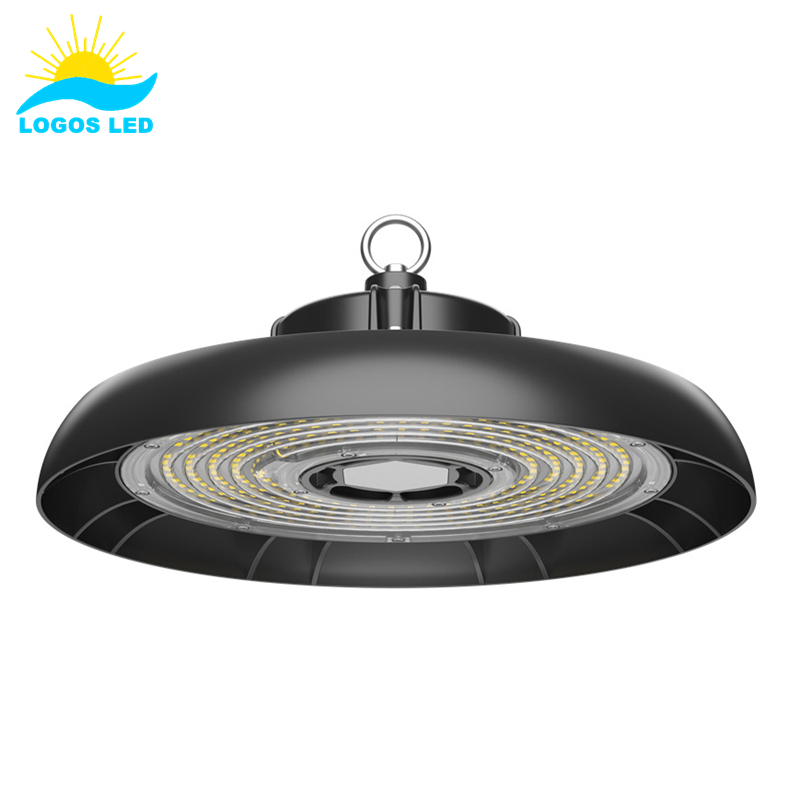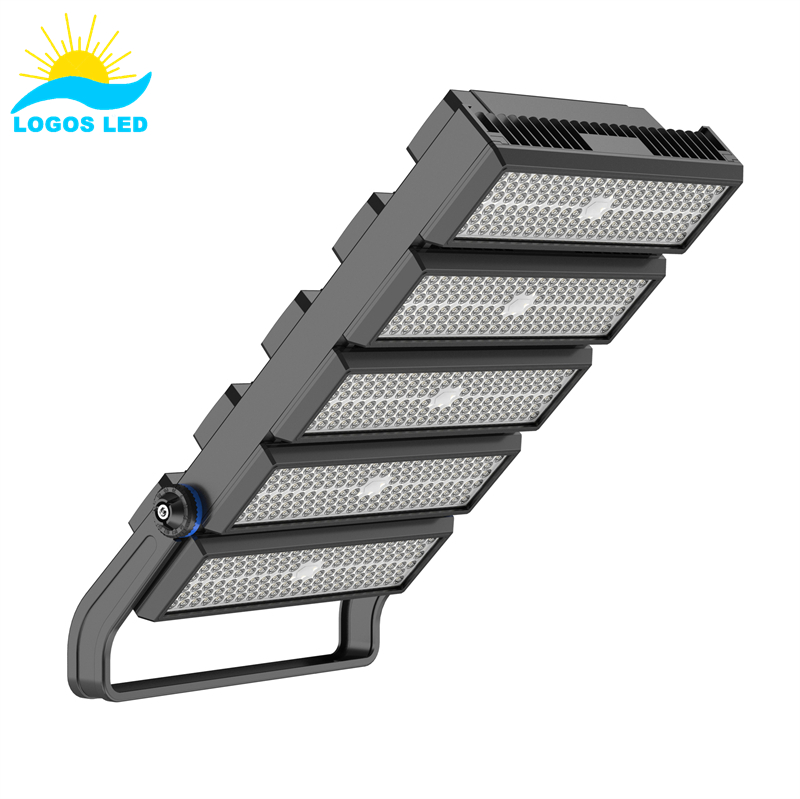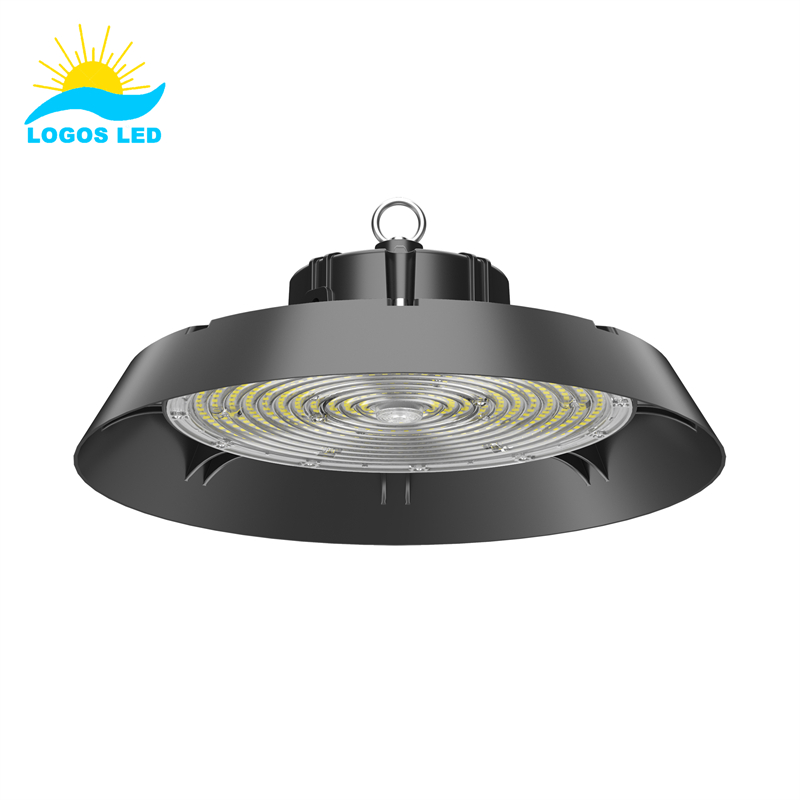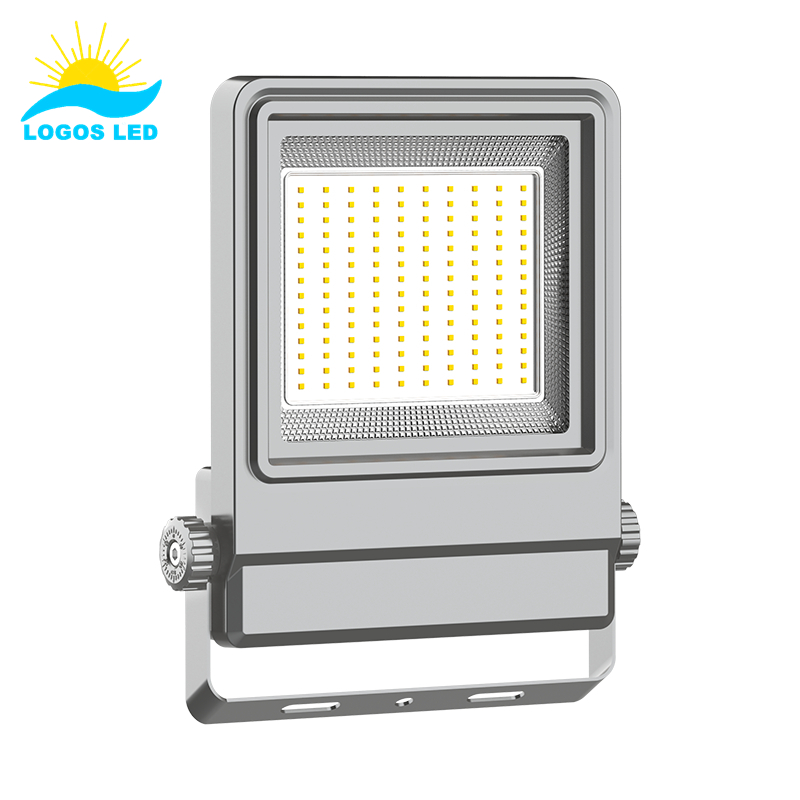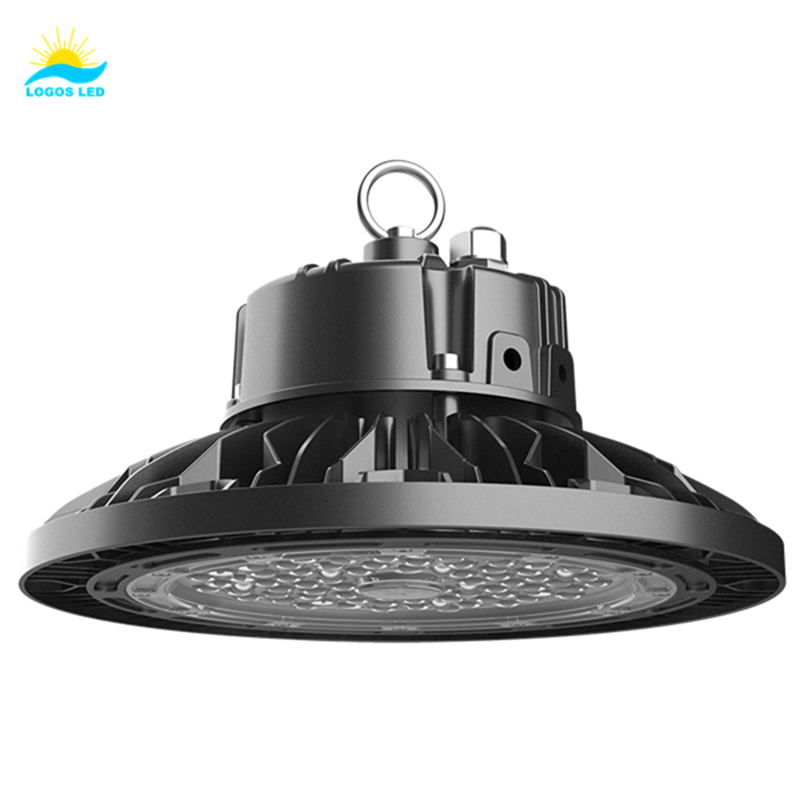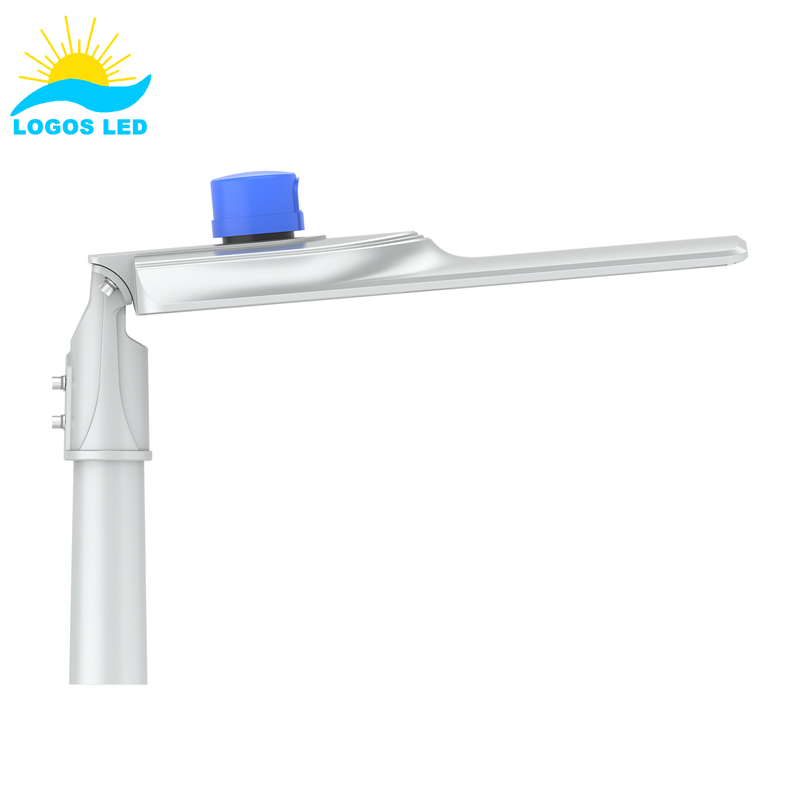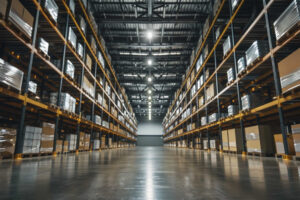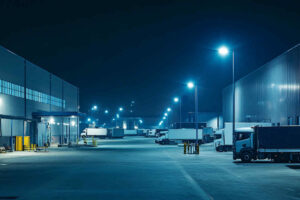Bad warehouse lighting isn’t just annoying—it’s a real problem. Dim or uneven lighting creates safety hazards, slows productivity, and racks up energy costs. Workers struggle to see, leading to mistakes, fatigue, and accidents that can cost businesses thousands. The solution? A smart warehouse lighting plan using the right LED fixtures to boost efficiency, safety, and savings.
Warehouse lighting isn’t one-size-fits-all. Different areas need different solutions—high bay lights for tall ceilings, low bay lights for smaller spaces, tube lights for uniform brightness, troffer/panel lights for office areas, vapor-proof lighting for tough conditions, and explosion-proof lighting for hazardous zones. Each plays a key role in keeping your warehouse safe, productive, and cost-efficient.
Let’s dive into the different types of warehouse lighting and how to choose the right one for your facility.
Table of Contents
What Are the Different Types of Lighting in a Warehouse?
Not all warehouse lighting is created equal. Different areas have different needs, and using the wrong lighting can lead to wasted energy, poor visibility, and safety risks. Here’s a breakdown of the most common warehouse lighting fixtures and where they work best.
High Bay Lighting
For warehouses with ceilings over 20 feet, high bay lights are the go-to solution. They provide powerful, even illumination across large spaces, reducing shadows and improving visibility. LED high bay lights are a game-changer compared to old-school HID or fluorescent fixtures. They last longer, use less energy, and require little maintenance—perfect for large storage areas, manufacturing plants, and distribution centers.
Low Bay Lighting
For warehouses with ceilings under 20 feet, low bay lights work best. They spread even illumination across smaller areas, cutting glare and making it easier for workers to see clearly. LED low bay lights outperform traditional metal halide or fluorescent options, with better energy savings, instant-on functionality, and longer lifespan.
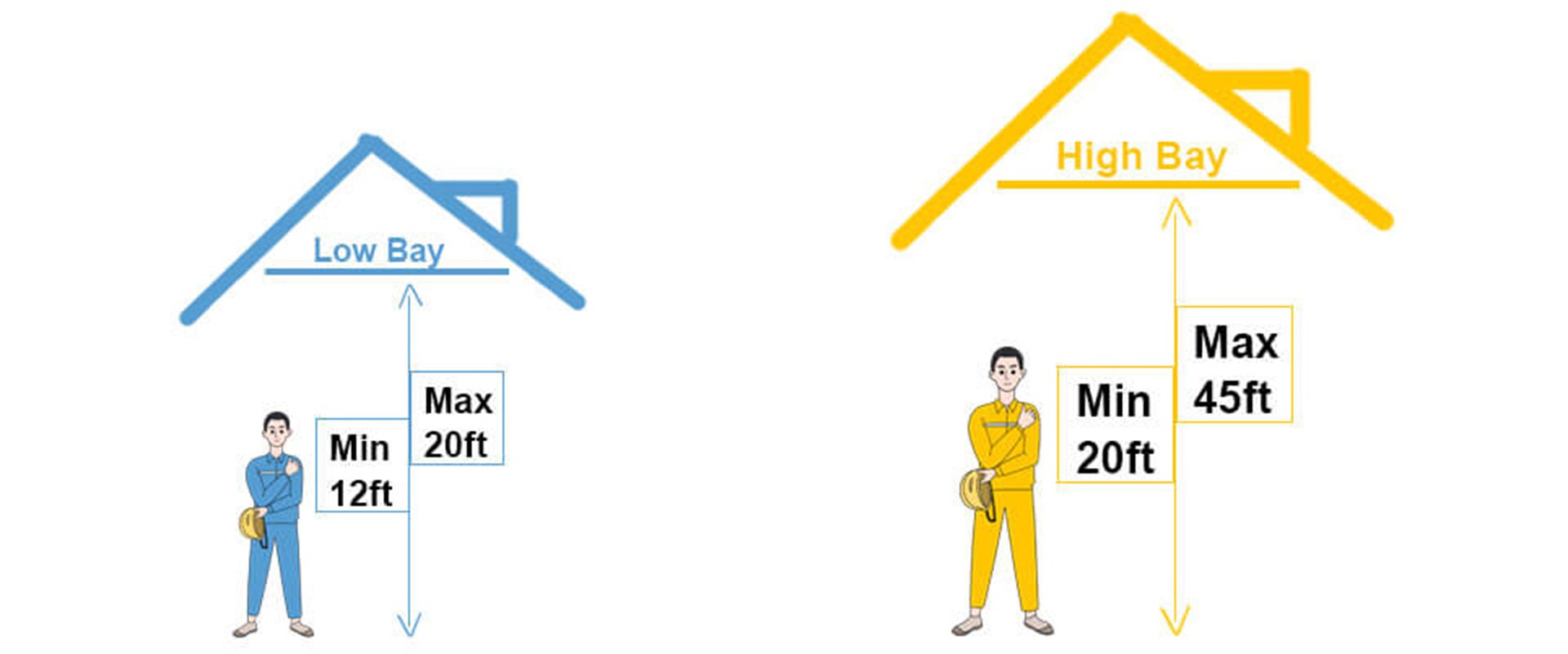
low bay vs high bay light
Tube Lights
LED tube lights are the perfect upgrade from old fluorescent tubes. They provide consistent, flicker-free lighting, making them great for aisles, shelving units, and workstations. Available in T5, T8, and T12 variants, LED tubes last longer, cut energy costs, and don’t overheat, creating a safer, more efficient work environment.
Troffer/Panel Lights
Warehouses don’t just have storage areas—they have offices, control rooms, and break areas too. Troffer and LED panel lights deliver low-glare, evenly diffused lighting, making these spaces more comfortable. Dimmable LED panels also work with smart lighting systems to reduce energy consumption and improve efficiency.
Vapor-Proof Lighting
Dealing with moisture, dust, or chemicals? You’ll need vapor-proof lights. These IP65 or IP66-rated fixtures are built to handle tough environments, making them ideal for cold storage, food processing areas, and outdoor docks. LED vapor-proof lights offer durability, consistent brightness, and long-term performance.
Explosion-Proof Lighting
If your warehouse handles hazardous materials, flammable gases, or combustible dust, explosion-proof LED lighting is a must. These fixtures prevent sparks and overheating, ensuring compliance with strict safety regulations. Common in chemical plants, oil refineries, and hazardous storage areas.
What Are the Lighting Requirements for a Warehouse?
Good warehouse lighting isn’t just about brightness—it’s about safety, efficiency, and productivity. The right setup helps workers see clearly, reduces mistakes, and minimizes accidents. Here’s what you need to consider:
Recommended Lux Levels
Lux measures light intensity, and different warehouse areas have specific lux requirements:
- General storage areas: 100-200 lux
- Aisles and picking zones: 200-300 lux
- Packing and shipping areas: 300-500 lux
- Assembly and inspection workstations: 500-1000 lux
- Loading docks and exterior security: 100-200 lux
The more detail-oriented the task, the higher the lux level required.
Uniformity and Glare Control
- Uniformity should be 0.6 or higher to prevent dark spots and ensure even illumination.
- Glare control (UGR < 22) is essential for reducing eye strain and keeping workers comfortable, especially in high-activity areas.
Color Rendering Index (CRI)
- CRI 80+ is recommended for general warehouse lighting to maintain accurate color perception.
- CRI 90+ is ideal for areas where detailed inspections and quality control are required.
Energy Efficiency and LED Lighting
- LED warehouse lights slash energy consumption by up to 70% compared to traditional lighting.
- Smart lighting controls, like motion sensors and dimmable LEDs, adjust brightness based on occupancy to save even more energy.
Emergency and Safety Lighting
- Warehouses must comply with OSHA, EN 12464-1, and IES safety standards.
- Exit signs and emergency lighting should be installed according to fire safety regulations.

Emergency LED UFO High Bay Lights
Benefits of Proper Warehouse Lighting
Good lighting is more than just a convenience—it’s a business investment. It boosts safety, efficiency, and cost savings. Here’s why upgrading your warehouse lighting is a smart move.
Improved Safety
- Prevents workplace accidents by ensuring clear visibility.
- Reduces the risk of slips, trips, and falls in poorly lit areas.
- Enhances security by improving surveillance and monitoring.
Increased Productivity
- Bright, uniform lighting reduces worker fatigue and eye strain.
- Well-lit workstations improve accuracy in picking, packing, and assembly.
- Employees work faster and with fewer mistakes.
Energy Efficiency and Cost Savings
- LED warehouse lights use up to 70% less energy than traditional fixtures.
- Longer lifespan means fewer replacements and lower maintenance costs.
- Smart lighting systems with motion sensors cut wasted energy.
Better Inventory Management
- Clear visibility makes it easier to track and organize inventory.
- Reduces errors in shipping, receiving, and stock control.
- Speeds up workflow by eliminating time wasted searching for products.
Compliance with Safety and Industry Standards
- Meets OSHA, EN 12464-1, and IES lighting regulations for workplace safety.
- Ensures proper emergency lighting and exit signage.
- Reduces liability risks from poor lighting conditions.
Enhanced Work Environment
- Proper lighting boosts employee morale and job satisfaction.
- A well-lit warehouse creates a safer, more professional workspace.
- Reduces absenteeism and improves overall efficiency.
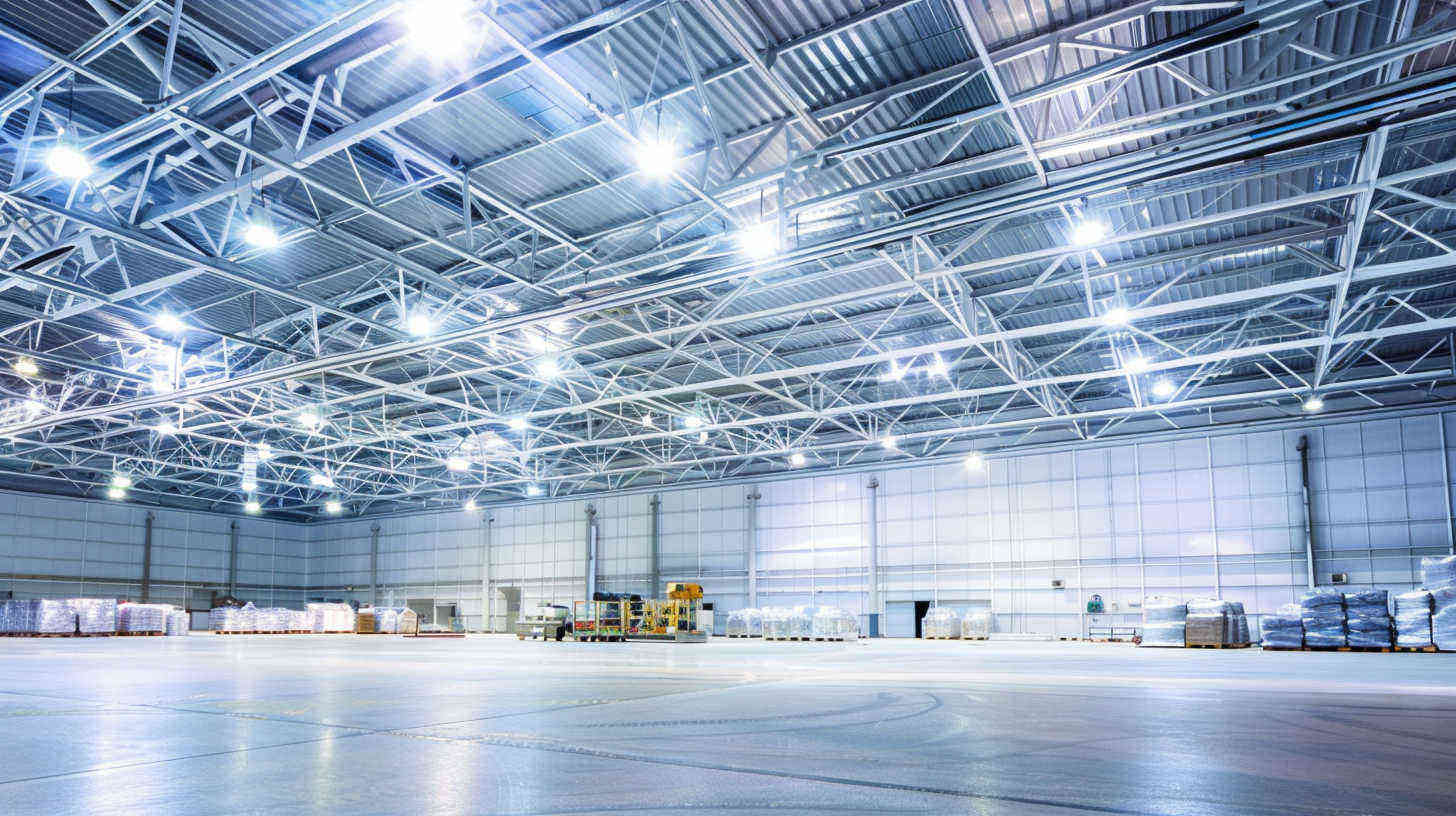
How to Choose the Best Warehouse Lighting?
Getting warehouse lighting right isn’t just about flipping a switch—it’s about safety, efficiency, and cost savings. The right lighting improves visibility, lowers energy bills, and boosts productivity. So, how do you pick the best lights for your space? Here’s what to consider.
1. Assess Ceiling Height
- High bay lights work best for ceilings over 20 feet.
- Low bay lights are ideal for ceilings under 20 feet.
- The right fixture prevents shadows and uneven brightness.
2. Determine Lighting Requirements
Different areas of a warehouse need different lux levels to ensure proper visibility:
- General warehouse areas: 200-300 lux
- Picking & packing zones: 300-500 lux
- Inspection & assembly areas: 500-1000 lux
3. Choose the Right Type of Lighting
- High bay or low bay LED lights – Best for open warehouse spaces.
- Tube lights – Great for aisles and shelving units.
- Troffer or panel lights – Ideal for offices and control rooms.
- Vapor-proof lighting – Perfect for dust, moisture, or chemical exposure.
- Explosion-proof lighting – A must for hazardous environments.
4. Prioritize Energy Efficiency
- LED lights use up to 70% less energy than older fixtures.
- Long lifespan means fewer replacements and lower maintenance costs.
- Smart lighting controls (motion sensors, dimming) cut energy waste.
5. Consider Light Quality and CRI
- CRI 80+ ensures accurate color perception.
- 4000K-5000K color temperature delivers bright, natural lighting.
- Uniform brightness reduces glare and eye strain for workers.
6. Ensure Compliance with Safety Standards
- Meets OSHA, EN 12464-1, and IES requirements.
- Includes emergency lighting and exit signs for safety.
- Proper placement helps reduce accidents and improve visibility.
7. Optimize with Smart Controls
- Motion sensors activate lights only when needed.
- Dimming options adjust brightness based on tasks.
- Daylight harvesting reduces electricity use by integrating natural light.
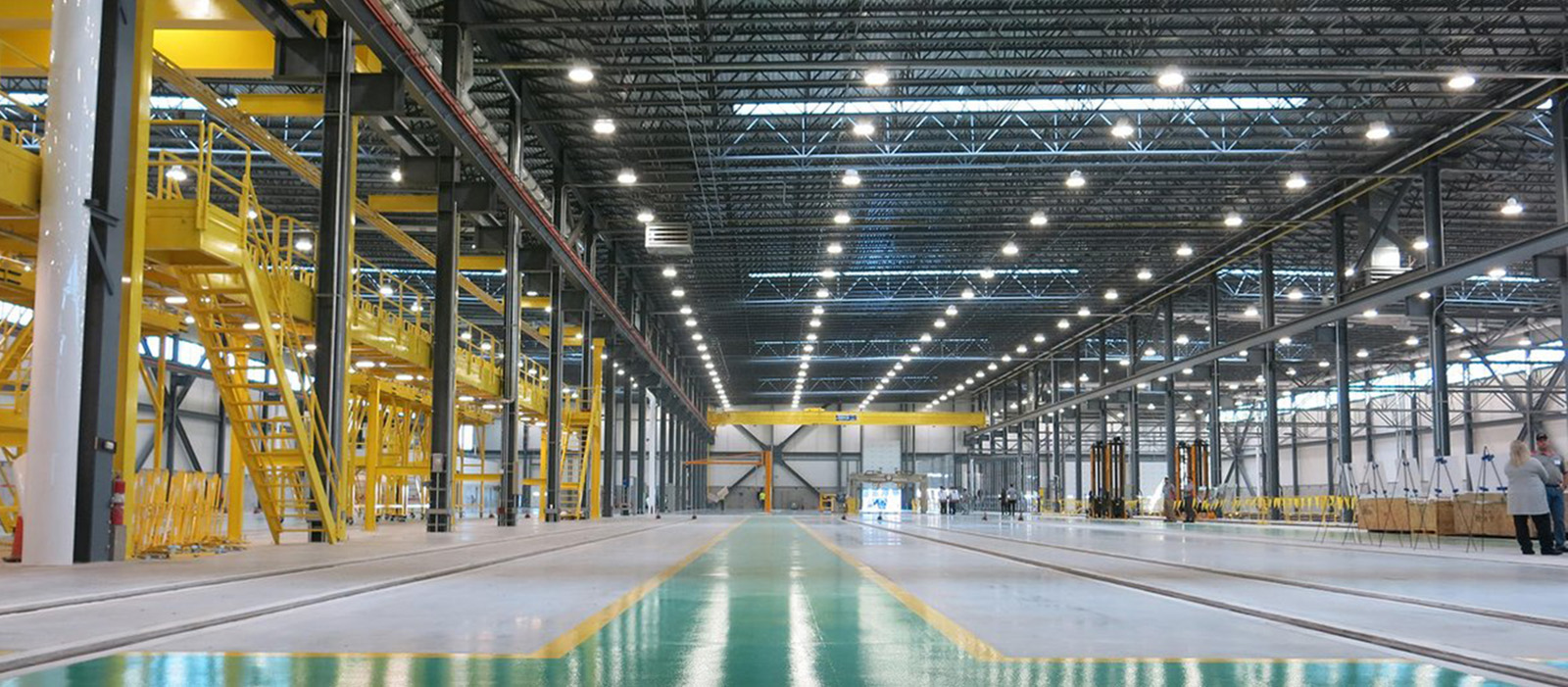
How Many Warehouse Lights Do You Need?
Too few lights, and your warehouse is full of dark spots. Too many, and you’re wasting energy. The right balance ensures safety, efficiency, and cost control.
1. Calculate the Required Lux Levels
Different areas need different illumination levels (measured in lux):
- Storage areas: 100-200 lux
- Aisles & picking zones: 200-300 lux
- Packing & shipping: 300-500 lux
- Assembly & inspection: 500-1000 lux
- Loading docks & security: 100-200 lux
2. Consider Warehouse Size and Ceiling Height
- High bay lights (20+ ft ceilings): Fewer fixtures needed due to high lumen output.
- Low bay lights (below 20 ft ceilings): More fixtures required for even coverage.
- Larger warehouses need more fixtures to eliminate dark areas.
3. Estimate Based on Fixture Type
Here’s a general estimate of the number of LED high bay lights required:
| Warehouse Size (sq. ft.) | Ceiling Height | Estimated Lights Needed |
|---|---|---|
| 5,000 – 10,000 sq. ft. | 15-20 ft | 20-30 fixtures |
| 10,000 – 20,000 sq. ft. | 20-25 ft | 40-60 fixtures |
| 20,000 – 50,000 sq. ft. | 25-30 ft | 80-150 fixtures |
| 50,000+ sq. ft. | 30-40 ft | 200+ fixtures |
4. Use a Lighting Layout Plan
- Simulate lighting placement using Dialux or Relux for accuracy.
- Ensure uniform brightness to eliminate glare and shadows.
- Adjust the fixture count based on beam angle and lumen output.
5. Consider Energy Efficiency & Smart Controls
- LED warehouse lights save up to 70% on electricity.
- Motion sensors & dimming options optimize energy use.
- Daylight integration reduces reliance on artificial lighting.
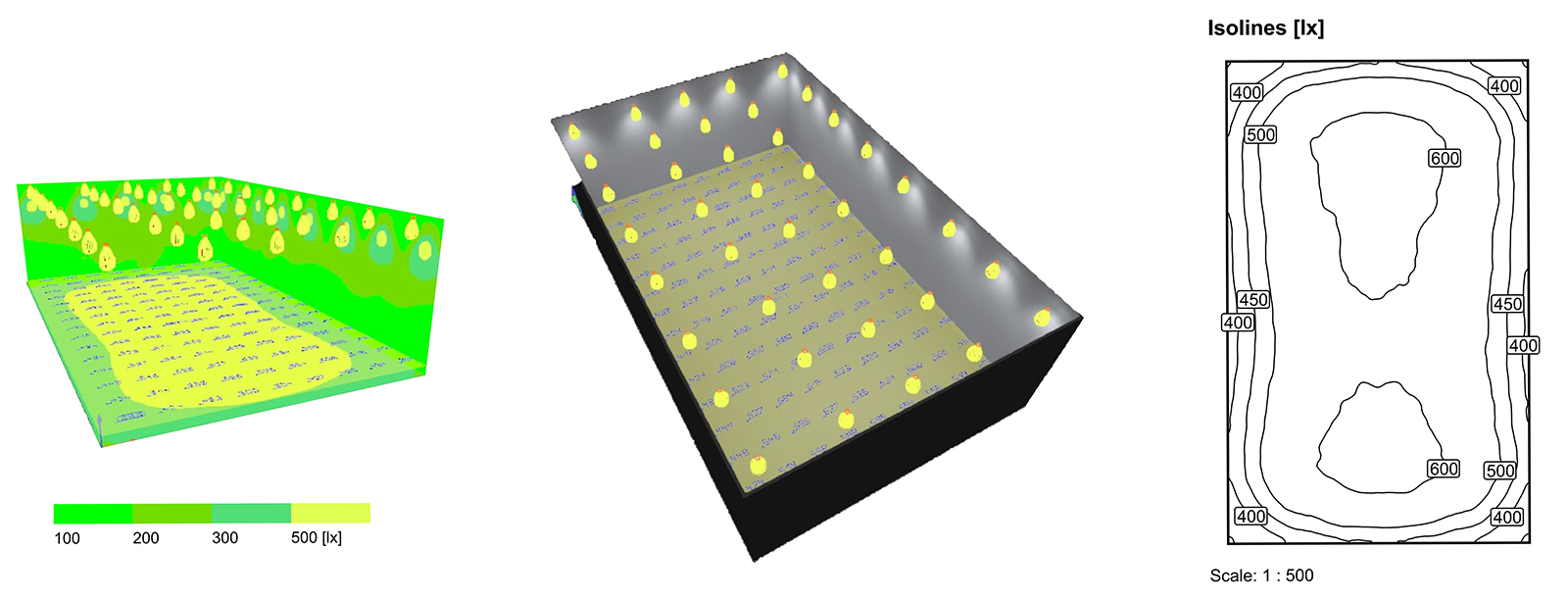
Why LED Lights Are Better Than Fluorescent Lights
Still using fluorescent lights in your warehouse? Here’s why switching to LED is a no-brainer:
- Longer lifespan – LEDs last 5x longer than fluorescents.
- Energy efficiency – Cuts power use by up to 70%.
- Instant start – No flickering or warm-up time.
- Better light quality – Higher CRI for better visibility.
- Eco-friendly – No mercury or toxic materials like fluorescents.
Installation & Maintenance of Warehouse Lights
Proper installation and maintenance keep warehouse lighting safe, energy-efficient, and reliable. A good lighting plan improves visibility, lowers costs, and prevents accidents.
1. Pre-Installation Considerations
Before installing warehouse lighting, check:
✔ Fixture type – Matches ceiling height and lux requirements.
✔ Wiring & voltage compatibility – Avoids electrical issues.
✔ Lighting layout – Prevents dark spots and glare.
✔ IP rating – For dusty, wet, or hazardous environments.
2. Installation Best Practices
- Turn off power before installation for safety.
- Mount fixtures at the right height (e.g., high bays for ceilings over 20 ft).
- Secure wiring connections to prevent electrical failures.
- Use motion sensors or dimmers for energy efficiency.
- Test lighting after installation to ensure proper function.
3. Routine Maintenance for Longevity
- Clean fixtures regularly – Dust buildup reduces brightness.
- Inspect wiring – Prevents failures and short circuits.
- Replace damaged lights – Keeps lighting uniform.
- Check for overheating – Especially in enclosed spaces.
- Test emergency lights – Ensures compliance with safety regulations.
4. Troubleshooting Common Issues
- Dim or flickering lights? Check for loose wiring or old drivers.
- Uneven brightness? Adjust fixture placement or add more lights.
- Power surges affecting lights? Install surge protectors.
- Motion sensors not working? Adjust sensor settings or positioning.
5. Upgrade to LED for Low Maintenance
- LED warehouse lights last 50,000+ hours = fewer replacements.
- Energy-efficient fixtures lower electricity costs by up to 70%.
- Smart controls & automation improve lifespan and efficiency.
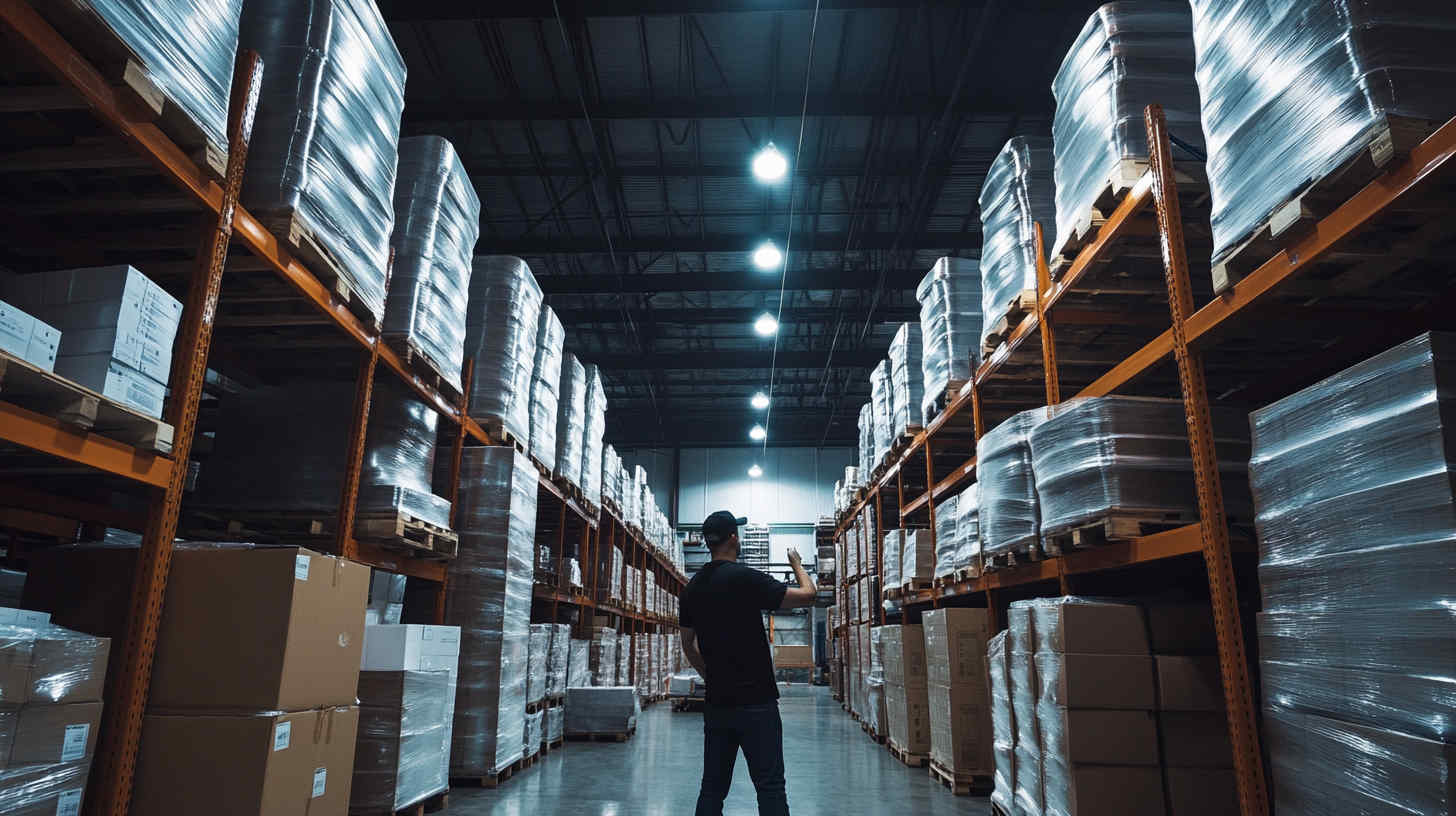
Conclusion
Choosing the right warehouse lighting LED is essential for safety, efficiency, and cost savings. High bay and low bay lights ensure bright, even illumination, while tube lights and panel lights create comfortable workspaces. Vapor-proof and explosion-proof lights keep operations safe in tough conditions.
Upgrading to LED warehouse lighting reduces energy costs, improves productivity, and creates a safer work environment.
Need help selecting the best warehouse lights? Contact us today for expert guidance and customized lighting solutions!
Request A Free Quote Now!
Send us a message if you have any questions or request a quote. We will get back to you ASAP!



